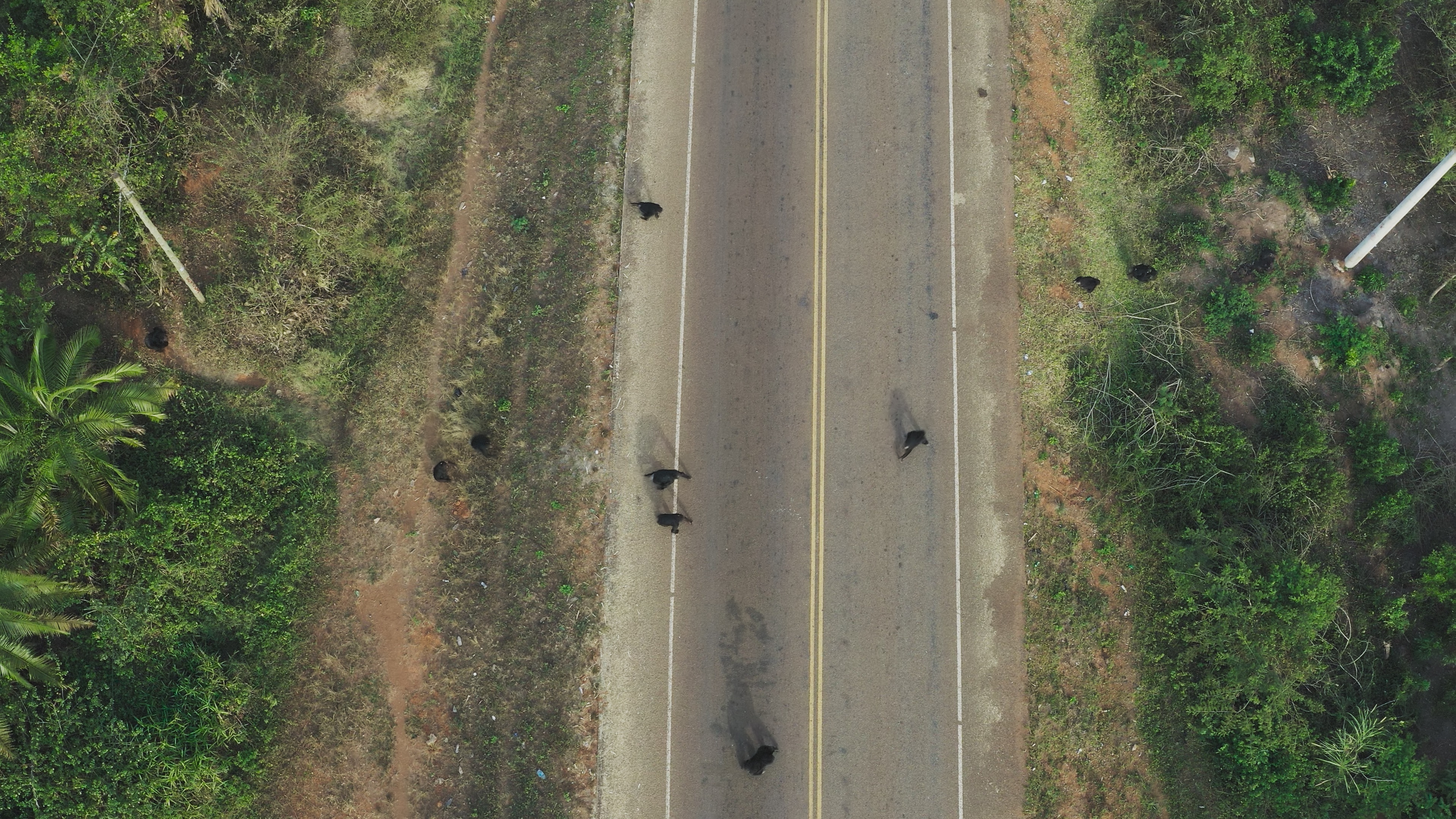BBC Earth newsletter
BBC Earth delivered direct to your inbox
Sign up to receive news, updates and exclusives from BBC Earth and related content from BBC Studios by email.
Planet Earth III
Sarah Whalley, producer of the Forests episode of Planet Earth III, tells us how footage of chimpanzees crossing roads was brought to our screens.
In 2019, while researching sequences for Planet Earth III, we discovered a story depicting the interaction between chimps and humans. This story, illustrating the impact of deforestation, captured our imagination in a thought-provoking way. The chimp groups in question were based in western Uganda and are remarkable in that they live incredibly close to humans. Every day they leave their forest home and walk across agricultural lands, encountering people and traffic.
The shoot required extensive planning over two years and was cancelled once due to Covid-19. We worked with a team of chimpanzee researchers, including Dr Matt McLennan and Tom Sabiiti, who have followed the chimps daily for 17 years. We wouldn’t have been able to film without their help; they not only know the chimps individually but also the local community.
We found out pretty quickly that the chimps didn’t like people inside the forest. Their strategy was to evade us which they did very effectively but after a few weeks the chimps became more accepting which was very rewarding.
I never imagined I would see chimps on a road; it’s just not their habitat."
Our team filmed the chimp group for 35 days and witnessed some hair-raising moments, especially when the chimps were crossing roads. Some of the younger males would just chance it, which was incredibly hard to watch – there were a few near-collisions. The alpha males and females, however, acted very differently. They would cross with utmost caution, waiting for the traffic to quieten. They have responded to new challenges by adopting behaviours that help them survive, which is remarkable. I never imagined I would see chimps on a road; it’s just not their habitat.

It's difficult to say what the future looks like for the relationship between the locals and the chimps. The chimps' forest isn't protected so it’s hard to prevent its clearing for agriculture. Recognising a forest's long-term benefits such as mitigating land erosion and buffering temperature rises – as well as its wildlife – can be difficult in the face of short-term pressures to grow crops. Attitudes among the local community vary, but Matt and Tom work hard to encourage tolerance for the chimps by providing assistance to families and incentives to mitigate conflict between chimps and humans. But the most effective way to preserve the peace is to help keep people and chimps apart.

Of the many human-wildlife conflicts around the world, the complex interactions between chimps and humans in rural Uganda are particularly unsettling – there have been fatalities on both sides – but it’s more important than ever that we don’t feel hopeless. Matt and Tom’s work has successfully halted deforestation in the area they work, which is a massive achievement. I remain cautiously optimistic that even more progress will be made as, overall, there is willingness to cooperate and bring about change. I believe that by allocating adequate resources and forming wide-ranging partnerships, we can move towards coexistence that benefits both people and wildlife.